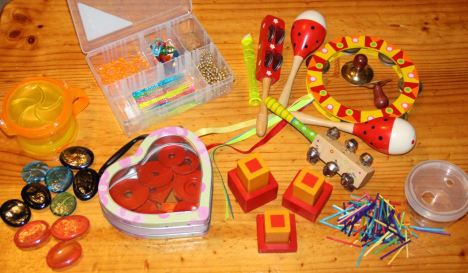
Do you ever get tired of repeating yourself? At times, repetition is required to train and grow our little ones in the way they should go. One tool that I personally find helpful is our Mummy and Daddy CD’s. I think of them as repeating myself every day for an hour or so without having to say a word!
A Mummy and Daddy CD is a recording that you make of anything you would like your child to memorize or know. Using a question and answer format, you and your husband record yourselves talking and singing and invite your child to join in. We have created one for each of our children to use during room time from around the age of 2 or so and they have all loved them.
Our recordings have included:
- personal information we want them to remember: (Address, phone number, their full name etc.)
- some basic general knowledge (naming the days of the week, months of the year)
- some math skills (counting, skip counting)
- bible verses we would like them to memorise
- character definitions and descriptions
- good manners scenarios
- children’s bible songs interspersed throughout
The question and answer format uses the child’s name each time and is repeated twice. One parent asks the questions and the other gives the answer. The idea is to have both voices recorded throughout, continuously engaging the child’s interest by using their name and encourage participation. For example;
When Jo wants a drink, what does Jo say?
Jo says “May I have a drink please?”
When Jo wants a drink, what does Jo say?
Jo says “May I have a drink please?”
Or
What is attentiveness?
Attentiveness is listening with the eyes, ears and heart.
Jo shows attentiveness when he stands still and looks at Mummy or Daddy’s face while we are speaking.
What is attentiveness?
Attentiveness is listening with the eyes, ears and heart.
Jo shows attentiveness when he stands still and looks at Mummy or Daddy’s face while we are speaking.
To make the recordings we use a free downloadable recording program from the internet called Audacity. It’s very basic and with my very limited technological understanding I have had no problems operating it. If I can do it, anyone can!
The idea for Mummy and Daddy CD’s comes from “Creative Family Times” by Allen Haidian and Will Wilson.
Filed under: Child training & behaviours, Christian Education, character, Sundays and the Sabbath | Tagged: behaviour, character, scripture memory, training toddlers | 3 Comments »



